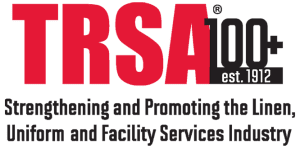TRSA released a statement to healthcare and laundry business media in response to a study in FEMS Microbiology Letters (“Clostridium difficile Environmental Contamination within a Clinical Laundry Facility in the USA,” Oct. 14, 2016) saying the study fuels misleading impressions of hospital laundry cleanliness.

In response to TRSA’s statement, the Healthcare Laundry Accreditation Council (HLAC) continued its attacks on laundries, overstating the study’s value and failing to acknowledge healthcare launderers’ history as partners in hospital infection prevention. HLAC’s statement this week was reminiscent of their April condemnation of exchange carts in linen supply (a longstanding safe practice) and their indication they had alerted regulatory authorities to the matter. “We oppose any effort that fuels unnecessary regulation, especially by reiterating unsubstantiated research and claims. Unwarranted regulation would substantially increase the cost of delivering hygienic linens, driving up the already escalating cost of delivering quality healthcare,” observed TRSA Chairman David Potack.
“The study found no threat to the health care facility from the laundry,” said TRSA President and CEO Joseph Ricci. “Responses calling for an extension of the healthcare environment into the laundry facility will create unnecessary regulatory burdens and increase costs. Current criteria for certified laundries prevent contamination.”
Several key areas of the study should be pointed out:
- No significant contamination was found on the clean side of the subject laundry
- It was expected that the soiled linen area would be more vulnerable to contamination than clean areas
- No conclusion was reached regarding soiled linen contamination as a risk to laundry workers
In processing hundreds of millions of soiled healthcare linens each year for decades, the number of documented cases of contamination or transfer of C. diff or any other transferrable disease or bacteria to an employee, patient or healthcare provider has no statistical bearing.
“Laundering hospital textiles provides the linchpin to prevent transmission of contamination from soiled linen,” said David F. Goldsmith, MSPH, PhD, a Georgetown University (Washington, DC) epidemiologist. “Laundries demonstrate that they can accomplish this by becoming certified to a standard such as TRSA’s Hygienically Clean Healthcare that requires their facilities to be inspected and undergo frequent laboratory testing to verify they meet independently established cleanliness requirements enforced around the world.”
The research fails to mention laundry processes’ effectiveness in eliminating bacteria, he noted. TRSA’s Hygienically Clean program has tested nearly 3,000 laundered items since 2013, roughly 25% specifically for clostridium and none have revealed any of this bacterium.
Commercial and other laundries processing healthcare linens:
- Follow industry best practices
- Pursue certification based on international standards and guidelines including CDC Guidelines for Environmental Infection Control in Health-Care Facilities as they pertain to laundry, bedding, personal protection, equipment, hand hygiene and cleaning
- Partner with their healthcare customers
In so doing, they undertake significant protocols to ensure regular sanitizing and cleaning of both the dirty and clean sides of the laundry facility, recognizing that workers may have contact with dirty linens, and requiring them to take necessary safety precautions including donning personal protective equipment (PPE).
The study located traces of C. difficile spore-forming bacteria in the soiled-linen area of the subject laundry and virtually zero in the “COG washing area” of the subject laundry facility, identifying the latter as “dirty” since linens were being processed there. This practice does not conform to industry best practices as indicated by laundry certification standards. Certification inspections ensure that any facilities processing healthcare linens have functional separation between dirty and clean linen processing areas to minimize risks associated with contamination.
Commercial laundries undertake strict precautions to minimize risk of any contamination. The majority of certified healthcare laundries worldwide undergo periodic inspection to ensure best practices and processing protocols are followed and clean linens are randomly tested. Laundries processing healthcare linens understand the importance of following strict guidelines for time, temperature, chemical and agitation levels in the cleaning process.
Last year, TRSA worked with healthcare professionals and others to develop The Six C's: Handling Soiled Linen in a Healthcare Environment, a video distributed to hundreds of healthcare facilities to help train their personnel regarding the proper handling of soiled linens to avoid risks to employees and patients.
Recent research indicates that healthcare facilities have significant concerns including C. diff surface testing results consistently higher than that found in laundries. Medical garments such as scrubs worn by nurses are at risk for contamination with potentially harmful bacteria through direct patient care and through contact with the patient’s environment, according to a molecular analysis of pathogen transmission. Frequently, nurses and other healthcare workers wear these and other garments in public and take them home for laundering in washers that cannot reach the water temperatures necessary to properly decontaminate them.

